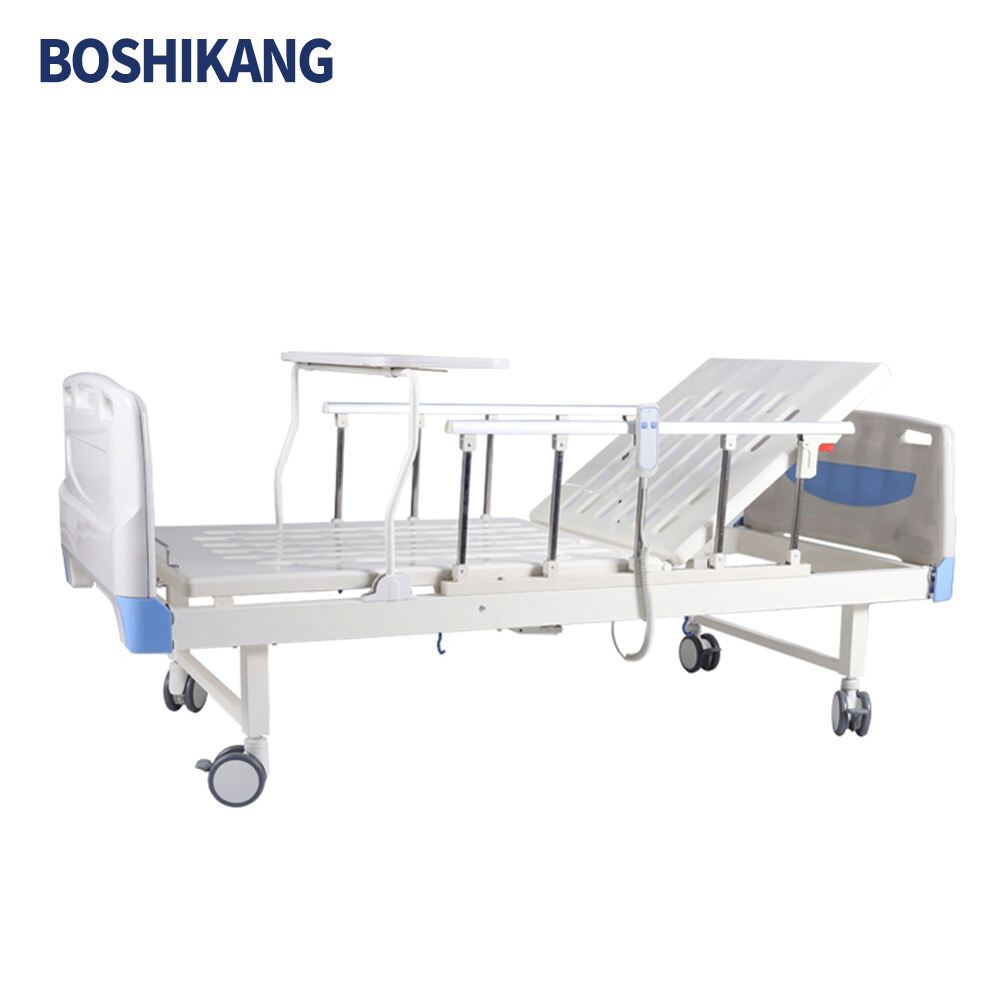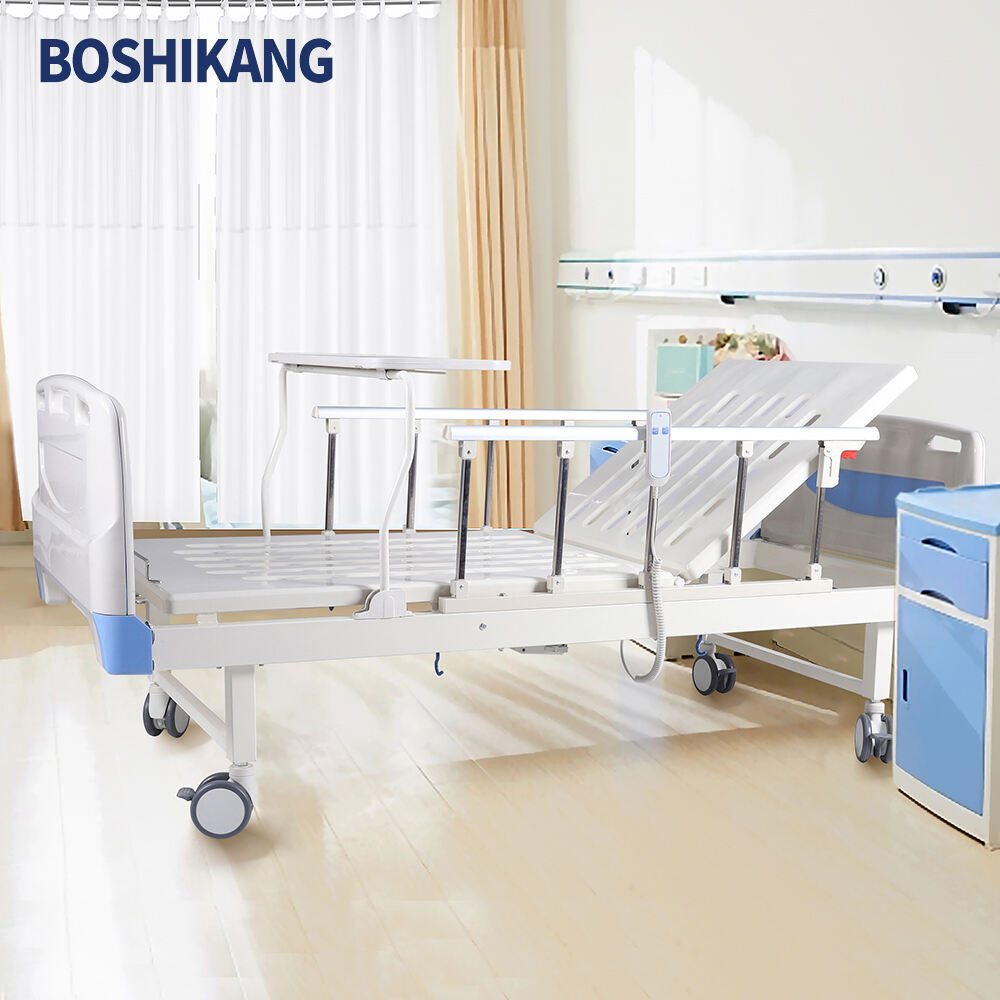Pedoman Penting untuk Tempat tidur rumah sakit Pemeliharaan dan Evaluasi Komponen
Tempat tidur rumah sakit merupakan peralatan medis penting yang membutuhkan pemeliharaan rutin dan penggantian komponen secara tepat waktu guna memastikan keselamatan dan kenyamanan pasien. Memahami cara mengidentifikasi dan mengganti komponen tempat tidur rumah sakit yang sudah aus sangat penting bagi manajer fasilitas kesehatan, staf pemeliharaan, serta teknisi peralatan medis. Panduan komprehensif ini akan membahas aspek-aspek penting dalam pemeliharaan tempat tidur rumah sakit, evaluasi komponen, dan prosedur penggantian untuk membantu menjaga fungsi optimal dan memperpanjang usia pakai peralatan.

Memahami Komponen Tempat Tidur Rumah Sakit dan Fungsinya
Komponen Mekanis dan Bagian Bergerak
Komponen tempat tidur rumah sakit mencakup berbagai elemen mekanis yang memungkinkan penyesuaian dan pergerakan tempat tidur. Bagian kepala dan kaki tempat tidur, pegangan sisi, serta mekanisme penyesuaian ketinggian semuanya memiliki bagian bergerak penting yang memerlukan pemeriksaan rutin. Komponen-komponen ini umumnya mencakup motor, aktuator, roda gigi, dan engsel yang bekerja sama untuk memberikan operasi yang lancar dan fungsi yang andal.
Rangka tempat tidur itu sendiri terdiri dari berbagai komponen struktural yang menopang berat pasien dan memudahkan berbagai opsi posisi. Memahami cara kerja komponen-komponen ini sangat penting untuk pemeliharaan yang tepat serta pemecahan masalah ketika muncul gangguan.
Sistem Elektronik dan Kontrol
Tempat tidur rumah sakit modern dilengkapi dengan sistem elektronik canggih yang mengendalikan berbagai fungsi. Fungsi-fungsi ini termasuk panel kontrol, harness kabel, dan papan sirkuit yang mengatur posisi tempat tidur, pereda tekanan, dan fitur otomatis lainnya. Komponen elektronik memerlukan perhatian khusus selama pemeriksaan pemeliharaan karena komponen tersebut sangat penting untuk operasi tempat tidur yang benar dan kenyamanan pasien.
Pengujian berkala terhadap komponen tempat tidur rumah sakit elektronik ini memastikan kinerja yang andal dan membantu mencegah terjadinya gangguan tak terduga. Staf pemeliharaan harus memahami prosedur diagnostik serta tanda-tanda peringatan kemungkinan kegagalan sistem elektronik.
Tanda-Tanda Pemakaian dan Degradasi
Indikator Pemeriksaan Visual
Inspeksi visual secara berkala dapat mengungkap banyak tanda pemakaian pada komponen tempat tidur rumah sakit. Perhatikan bagian plastik yang retak atau rusak, kabel yang berfray, koneksi yang longgar, dan bantalan (bearing) yang sudah aus. Karat pada permukaan, komponen logam yang bengkok, atau celah tidak biasa pada bagian bergerak bisa menunjukkan potensi masalah yang memerlukan perhatian.
Platform penopang kasur harus diperiksa untuk mengetahui tanda-tanda pelengkungan atau kerusakan. Mekanisme rel sisi perlu diperiksa secara hati-hati untuk memastikan operasi yang lancar dan penguncian yang aman. Setiap kerusakan yang terlihat harus didokumentasikan dan ditangani segera untuk mencegah kerusakan lebih lanjut.
Tanda Bahaya Operasional
Masalah kinerja sering kali menandakan komponen tempat tidur rumah sakit komponen tempat tidur. Suara yang tidak biasa selama operasi, seperti suara berderak atau berdecit, biasanya menunjukkan masalah mekanis. Gerakan yang lambat atau tidak konsisten saat menyesuaikan posisi tempat tidur dapat menunjukkan masalah motor atau aktuator. Kontrol yang tidak responsif atau perilaku elektronik yang tidak terduga dapat mengindikasikan masalah pada sistem kelistrikan.
Staf harus memperhatikan umpan balik dari pasien dan pengasuh mengenai kinerja tempat tidur. Seringkali, perubahan halus dalam operasi bisa menjadi peringatan dini adanya keausan komponen yang perlu ditindaklanjuti.
Prosedur Penggantian Komponen
Persiapan dan Tindakan Keamanan
Sebelum memulai penggantian komponen apa pun, pastikan persiapan dan protokol keselamatan telah dilakukan dengan benar. Ini termasuk memutuskan sumber daya, mengamankan tempat tidur dalam posisi stabil, serta menyiapkan alat dan suku cadang yang diperlukan. Selalu merujuk pada dokumentasi pabrikan untuk prosedur dan pedoman keselamatan yang spesifik.
Jaga kebersihan area kerja dan gunakan alat pelindung diri yang sesuai saat menangani komponen tempat tidur rumah sakit. Dokumentasikan semua prosedur penggantian dan simpan catatan suku cadang yang digunakan untuk referensi di masa mendatang.
Proses Penggantian Langkah demi Langkah
Penggantian komponen harus dilakukan secara sistematis untuk memastikan pemasangan dan fungsi yang benar. Mulailah dengan melepas penutup atau panel untuk mengakses komponen yang sudah aus. Lepaskan dan keluarkan komponen lama dengan hati-hati, perhatikan orientasi dan titik koneksi. Pasang komponen baru sesuai spesifikasi pabrikan, pastikan semua koneksi terhubung dengan aman.
Setelah pemasangan, lakukan pengujian menyeluruh pada komponen yang diganti dan sistem terkait. Periksa operasi yang benar melalui seluruh rentang gerakan atau fungsi. Dokumentasikan proses penggantian dan perbarui catatan pemeliharaan sesuai kebutuhan.
Strategi Pemeliharaan Preventif
Jadwal Inspeksi Berkala
Terapkan jadwal inspeksi menyeluruh untuk semua komponen tempat tidur rumah sakit. Ini harus mencakup pemeriksaan visual harian oleh staf, pengujian operasional mingguan, dan inspeksi mendetail bulanan pada sistem mekanis dan elektronik. Buat daftar periksa yang mencakup semua komponen kritis dan simpan catatan temuan secara rinci.
Tetapkan prosedur yang jelas untuk melaporkan dan menangani masalah yang teridentifikasi. Inspeksi berkala membantu mencegah kegagalan tak terduga dan memperpanjang usia komponen tempat tidur rumah sakit melalui intervensi dini.
Dokumentasi Perawatan
Dokumentasi yang tepat sangat penting untuk melacak pemeliharaan dan penggantian komponen tempat tidur rumah sakit. Simpan catatan terperinci mengenai semua pemeriksaan, perbaikan, dan penggantian komponen. Sertakan tanggal, nomor suku cadang, informasi teknisi, serta observasi atau masalah yang relevan yang ditemukan.
Gunakan dokumentasi ini untuk mengidentifikasi pola keausan, memprediksi kebutuhan pemeliharaan, dan mengoptimalkan jadwal penggantian. Catatan yang baik juga membantu pengelolaan inventaris dan perencanaan anggaran untuk penggantian komponen di masa mendatang.
Pertanyaan yang Sering Diajukan
Seberapa sering komponen tempat tidur rumah sakit harus diperiksa?
Komponen tempat tidur rumah sakit harus menjalani pemeriksaan visual harian oleh staf, pemeriksaan fungsional mingguan, serta inspeksi menyeluruh bulanan oleh personel pemeliharaan yang berwenang. Komponen kritis seperti pegangan sisi dan kontrol elektronik harus diuji pada setiap pergantian shift.
Apa saja tanda umum yang menunjukkan bahwa komponen tempat tidur rumah sakit perlu diganti?
Indikator umum meliputi suara yang tidak biasa selama operasi, gerakan yang tertunda atau tidak konsisten, keausan atau kerusakan pada bagian yang terlihat, perangkat keras yang longgar atau hilang, serta kontrol yang tidak berfungsi dengan baik. Setiap masalah terkait keselamatan, seperti mekanisme rel samping yang rusak, memerlukan perhatian dan penggantian segera.
Apakah komponen tempat tidur rumah sakit dapat diperbaiki alih-alih diganti?
Meskipun beberapa perbaikan kecil mungkin dapat dilakukan, banyak komponen tempat tidur rumah sakit dirancang untuk diganti alih-alih diperbaiki demi alasan keselamatan dan keandalan. Selalu merujuk pada panduan pabrikan dan pertimbangkan usia serta kondisi peralatan saat memutuskan antara opsi perbaikan atau penggantian.


